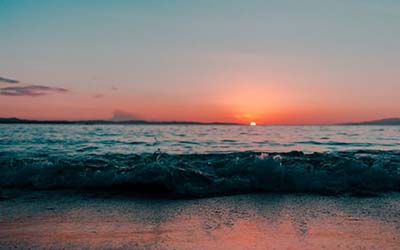Feb. 25, 2025
Contact: Joanne Foreman, 517-284-5814
National Invasive Species Awareness Week, Feb. 24-28, a great time to learn more, commit to year-round action
Invasive species are a growing problem in Michigan and the U.S. During National Invasive Species Awareness Week (Feb. 24 – 28, 2025), Michigan’s Invasive Species Program is joining efforts across all 50 states to encourage everyone to take action to prevent the introduction and spread of harmful plants, animals and diseases.
 Michigan’s Invasive Species Program is cooperatively implemented by the Michigan departments of Agriculture and Rural Development; Environment, Great Lakes, and Energy; and Natural Resources. Michigan’s Invasive Species Program is cooperatively implemented by the Michigan departments of Agriculture and Rural Development; Environment, Great Lakes, and Energy; and Natural Resources.
The program includes a network of 22 cooperative invasive species management areas, or CISMAs, which provide services to all 83 Michigan counties. Universities, nonprofit organizations, volunteers and other state agencies, including the Michigan Department of Transportation, also play a crucial role in preventing, detecting and managing invasive species throughout the state. |
In 2024, the MISP surveyed more than 100,000 acres of public and private land for invasive species, including spotted lanternfly, red swamp crayfish and beech leaf disease. Management actions for invasive phragmites, hemlock woolly adelgid, oak wilt, mile-a-minute weed and other species covered nearly 25,000 acres.
What is an invasive species?
An invasive species is one that is not native and whose introduction causes harm, or is likely to cause harm to Michigan’s economy, environment or human health.
Many non-native species in Michigan, including fruits, vegetables, field crops, livestock and domestic animals, are important to our economy and lifestyle. Most non-native species are not harmful and may provide economic benefits.
“Invasive species cause harm when they outcompete native species by reproducing and spreading rapidly in areas where they have no natural predators,” said Joanne Foreman, DNR invasive species communication specialist. “This can change the balance of ecosystems we rely on, like forests, rivers and lakes. As for economic impact, a 2021 study estimated that invasive species have cost North America over $26 billion per year since 2010.”
How do invasive species get here?
Most invasive species don’t move far on their own. Instead, they find their way with the help of humans. Modern modes of transportation bring goods, services, people and invasive species to and from all parts of the world.
- Some exotic pets and plants escape or are released into the wild and adapt to local conditions.
- The spotted lanternfly is moving across the U.S. by hitchhiking or laying eggs on vehicles and goods traveling through infested areas.
- Other insects arriving from abroad in wood packing materials and wood products have caused irreparable damage to native trees and forests.
- Some species now classified as invasive were intentionally brought to the U.S. as biological controls for other invasives; others were introduced as game or food species.
How do they spread?
 What makes many invasives so successful in taking hold is their ability to colonize new areas very rapidly. For plants, this can mean having seeds that catch on clothing and fur or are eaten and distributed by birds. Some plants, like Eurasian watermilfoil or invasive phragmites, can reproduce from cut or broken plant parts. What makes many invasives so successful in taking hold is their ability to colonize new areas very rapidly. For plants, this can mean having seeds that catch on clothing and fur or are eaten and distributed by birds. Some plants, like Eurasian watermilfoil or invasive phragmites, can reproduce from cut or broken plant parts.
Oak wilt spores and emerald ash borer larvae have been transported to many sites in Michigan on firewood. Microscopic zebra mussel larvae and many invasive aquatic plants have hitchhiked from one lake to another on watercraft and trailers. Garlic mustard has spread along many roadsides and forest trails with the help of cars, plows, all-terrain vehicles and hikers. In fact, for many invasives, hitchhiking with humans is a common (yet preventable) mode of transportation. |
You can help!
- Travel clean – After spending time in the outdoors, check for and remove mud, debris and plant material from vehicles, clothing and gear before heading to your next destination. Always leave firewood at home. Instead, purchase it at or near your destination.
- Lend a hand – Connect with your local CISMA to find volunteer opportunities or learn best practices for managing invasive species on your property.
- Identify and report – Learn how to spot invasive species and help MISP efforts by reporting watch list species. Visit Michigan.gov/Invasives and the Midwest Invasive Species Information Network for identification and reporting information.
“Public reporting has been critical to statewide invasive species detections. Residents in southeast Michigan helped identify new infestations of spotted lanternfly by posting photos and locations in Michigan’s Eyes in the Field reporting system, and people across the state have assisted with oak wilt management by reporting through the Oak Wilt Interactive Mapping Tool,” said Foreman.
To learn more about protecting Michigan’s special places from invasive species, visit Michigan.gov/Invasives.
Michigan’s Invasive Species Program is cooperatively implemented by the Department of Environment, Great Lakes, and Energy; the Department of Natural Resources; and the Department of Agriculture and Rural Development.
Note to editors: Accompanying photos are available below for download. Caption information follows.
NISAW: National Invasive Species Awareness Week is an international event to raise awareness about invasive species, the threat that they pose, and what can be done to prevent their spread. Courtesy of NAISMA, the North American Invasive Species Management Association.
SLF close up: Help to slow the spread of spotted lanternfly in Michigan by checking for and removing hitchhiking insects or egg masses on vehicles, gear and outdoor items that have been in infested areas. |








